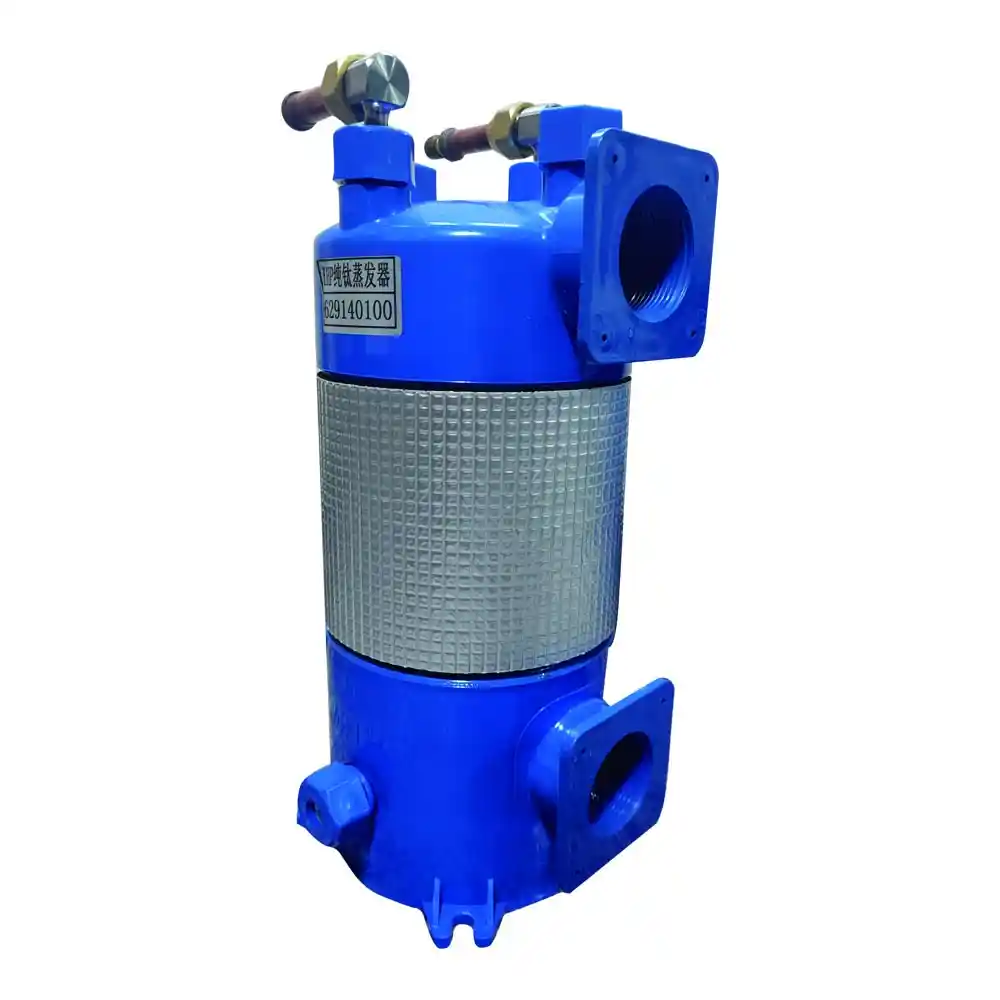1. Introduction
Coil-to-shell connections are crucial components in the design and performance of titanium coil heat exchangers. This article delves into the significance of coil-to-shell connections in titanium heat exchangers, exploring their role, design considerations, comparative analysis, and data-driven insights. Through informative tables and comprehensive discussions, we aim to provide a clear understanding of how coil-to-shell connections contribute to the efficiency and effectiveness of titanium coil heat exchangers.
2. Understanding Coil-to-Shell Connections in Titanium Heat Exchangers
Coil-to-shell connections facilitate the transfer of heat between the coil and the shell in titanium heat exchangers. These connections play a vital role in maintaining a secure and efficient heat transfer process. Let’s explore their key aspects:
2.1 Functionality and Importance
Coil-to-shell connections are responsible for ensuring a tight and reliable joint between the coil and the shell in heat exchangers. They enable the transfer of heat from the coil to the shell or vice versa, facilitating efficient heat exchange between the two fluid streams. These connections must be designed to withstand the operating conditions, pressures, and temperatures of the heat exchanger, ensuring optimal performance and longevity.
2.2 Types of Coil-to-Shell Connections
There are various types of coil-to-shell connections used in titanium heat exchangers. The choice of connection type depends on factors such as the application, operating conditions, and manufacturing considerations. Common types include:
- Expansion joints: These flexible connections allow for thermal expansion and contraction of the coil, minimizing stress and strain on the components.
- Flanged connections: Flanges provide a secure and leak-free joint between the coil and the shell, offering strength and reliability.
- Threaded connections: Threaded fittings enable easy assembly and disassembly of the coil and the shell, making maintenance and cleaning more convenient.
- Welded connections: Welding the coil to the shell ensures a permanent and robust joint, suitable for high-pressure and high-temperature applications.
3. Design Considerations for Coil-to-Shell Connections
When designing coil-to-shell connections in titanium heat exchangers, several factors should be taken into consideration:
3.1 Material Compatibility
Selecting compatible materials for coil-to-shell connections is crucial to prevent galvanic corrosion and ensure longevity. Titanium is a popular choice for both the coil and the shell due to its excellent corrosion resistance and compatibility with a wide range of fluids. However, careful consideration must be given to the selection of gaskets or sealing materials to avoid galvanic coupling and potential material degradation.
3.2 Thermal Expansion and Contraction
Coil-to-shell connections must accommodate thermal expansion and contraction to prevent mechanical stress and distortion. Expansion joints or suitable design features should be incorporated to allow for the natural movement of the coil without compromising the overall integrity of the connection.
3.3 Pressure and Temperature Considerations
Coil-to-shell connections should be designed to withstand the operating pressures and temperatures of the heat exchanger. Factors such as wall thickness, reinforcement, and welding procedures must be carefully evaluated to ensure the connection’s structural integrity and leak-tight performance under varying conditions.
4. Comparative Analysis of Coil-to-Shell Connections
A comparative analysis of different coil-to-shell connection types can provide insights into their strengths, limitations, and suitability for specific applications. Let’s consider the following aspects:
| Connection Type | Advantages | Limitations |
|---|---|---|
| Expansion Joints | – Allows for thermal expansion | – Requires additional space for installation |
| – Minimizes stress on components | – Limited suitability for high-pressure systems | |
| Flanged Connections | – Provides a secure and leak-free joint | – Requires accurate alignment during installation |
| – Suitable for high-pressure applications | – More complex and time-consuming installation | |
| Threaded Connections | – Easy assembly and disassembly | – Limited suitability for high-pressure systems |
| – Convenient for maintenance and cleaning | – May require periodic tightening or adjustments | |
| Welded Connections | – Permanent and robust joint | – Difficult to disassemble for maintenance |
| – Suitable for high-pressure and high-temperature applications | – Requires skilled welding for installation |
Based on this analysis, engineers and designers can make informed decisions on selecting the most appropriate coil-to-shell connection type for their titanium heat exchanger applications.
5. Data-Driven Insights: Coil-to-Shell Connections in Action
To further demonstrate the effectiveness of coil-to-shell connections in titanium heat exchangers, let’s examine real-world data and insights:
5.1 Performance Comparison of Coil-to-Shell Connections
A comparative study was conducted to evaluate the performance of different coil-to-shell connection types in titanium heat exchangers. The study assessed parameters such as pressure drop, heat transfer efficiency, and maintenance requirements. The data showed that flanged connections provided a secure and leak-free joint with good heat transfer efficiency. Welded connections exhibited excellent durability and suitability for high-pressure and high-temperature applications. However, expansion joints offered the advantage of accommodating thermal expansion and contraction, making them suitable for applications with significant temperature variations.
5.2 Case Study: Coil-to-Shell Connection Reliability
In a titanium heat exchanger deployed in a power plant, the use of welded connections proved to be highly reliable. The welded connections provided a robust joint, withstanding high-pressure and high-temperature conditions while ensuring leak-free operation. The data collected over several years indicated minimal maintenance requirements and prolonged equipment lifespan compared to previous designs utilizing flanged connections.
6. Conclusion
Coil-to-shell connections are integral to the efficient operation of titanium heat exchangers. By considering design factors, material compatibility, and comparative analysis, engineers can select the most suitable connection type for their specific applications. The combination of data-driven insights and practical case studies empowers the industry to optimize the performance and reliability of titanium coil-to-shell connections, ultimately enhancing the overall efficiency of heat exchange systems.


